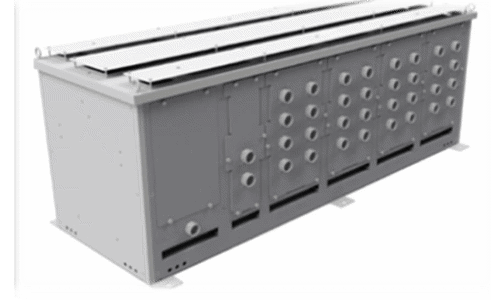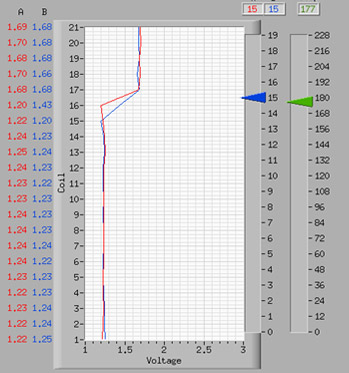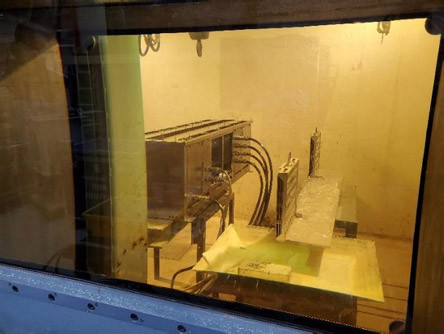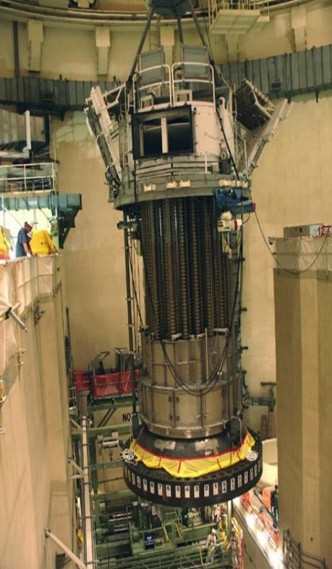

NextGEN RPI Coil Voltages

NextGEN RPI Radiation Testing – Passed 750kRads

NextGEN RPI Installation on the Head
The Westinghouse Solution
Westinghouse’s patent-pending NextGEN RPI design offers a cost-effective solution to resolve all Analog Rod Position Indication (ARPI) shortcomings and provide a simplified upgrade solution for ARPI and Digital Rod Position Indication (DRPI) plants.
Customer Solution
Analog Rod Position Indication was designed and installed in the 1960s and 1970s but has had many system issues including calibration, detector non-linearity, detector steady-state thermal dependence, improper detector excitation, electromagnetic coupling to nearby detectors, numerous single point failures, and signal conditioning circuit drift. Westinghouse developed Digital Rod Position Indication to replace ARPI for new plants coming online and this system eliminated all the ARPI system issues while providing redundancy. DRPI wasn’t a simple upgrade as for ARPI plants it required a large footprint inside containment, doubled the cablings coming off, was susceptible to cable connection issues, required maintenance during the outage, and required subject matter experts to help maintain the system. Based on the need to improve on the DRPI system and minimize the installation effort Westinghouse developed NextGEN RPI.
Description
NextGEN RPI utilizes the DRPI coil stacks and cabling to connect newly installed smaller data cabinets which now reside on the head. Each data cabinet redundantly sends its corresponding train’s coil voltages outside containment to data acquisition hardware, which converts these voltages into rod positions and processes rod position system alarm logic.
With the data cabinets being located on the head, this reduces the footprint of the system and the need for new cable trays for field cables. With only six (6) cables connecting to the head, as opposed to ARPI having up to 61 and DRPI having up to 122, outage time is reduced through fewer connections to connect/disconnect. Almost no system checkout is required as detector cables are not altered; a simple system power on and communication verification is all that is necessary. The redundancies built into the system allow for zero online maintenance and eliminates the need of future replacement of detectors or head cables.
Benefits
- Single step accuracy
- Provides Full System Redundancy inside and outside of containment
- Minimizes installation and checkout time
- Eliminates all ARPI and DRPI system issues
- Zero single point failures
- Only 6 cables to disconnect\connect during outage
- Provides coil failure mitigation, coil cable resistance mitigation, and coil voltage trending/alarming
- Provides stuck rod detection
- No logic processed inside containment
- Installs on the head near disconnect panel or as part of Simplified Head Assembly
- Utilizes DADS upgrade as control room upgrade
- Mitigates need for future cable\detector replacements and need for cable testing service
- Integrated automatic no setup rod drop testing
- Return on investment as short as 5 years















